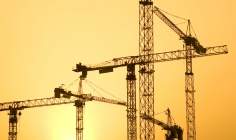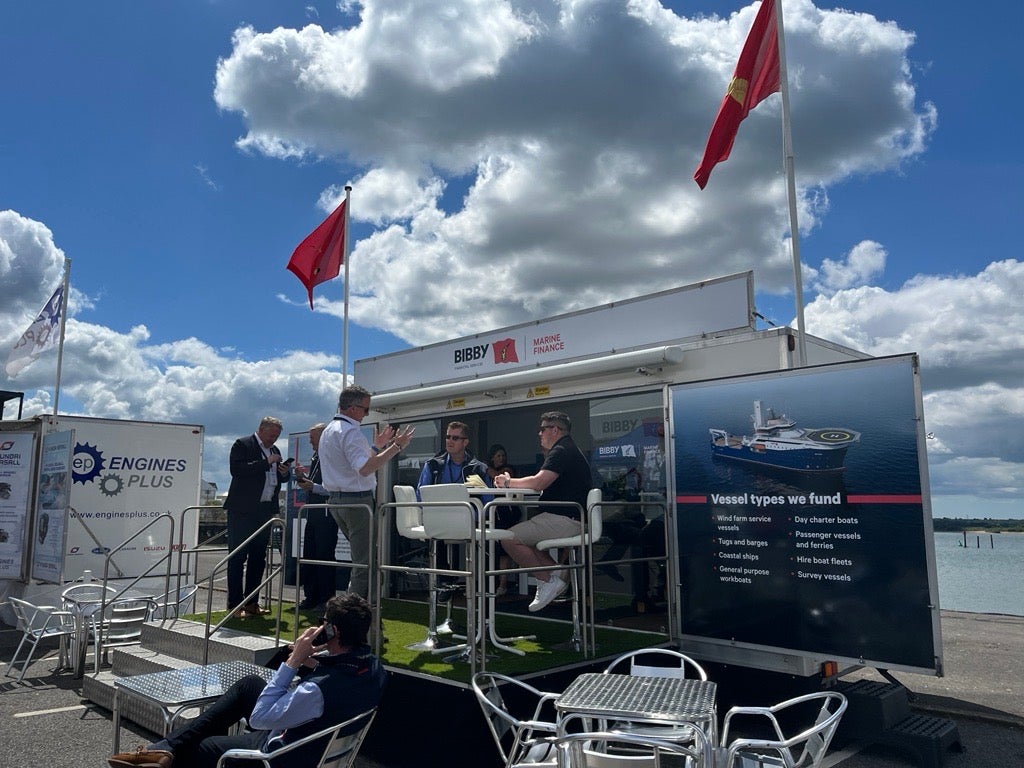
In the leasing business success always depends to some extent on the strength of the industry being served as well as the wider economy and perhaps nowhere more so than in the crane leasing sector.
One industry still struggling globally as a result of the financial crisis and further languishing in Europe in the wake of sovereign debt-induced fiscal austerity is the construction industry.
Deeply entwined with the construction industry is the tower crane leasing segment which crashed along with its end-user market.
"The tower crane market reduced substantially during the crisis," Martin Hofman, international programme manager within the Industrial Equipment & Transport division of Societe Generale Equipment Finance (SGEF), tells Leasing Life, "and by substantially I mean more than 40% in 2009."
Hofman says the tower-crane leasing sector is still heavily impacted by the crisis and remains at a very low level compared to elsewhere in the market because the assets are primarily used in the construction sector.
SGEF, which operates vendor partnerships with a number of manufacturers globally, has seen a reduction in tower crane business with a decline in equipment investment, according to Hofman, who adds there is a large amount of used equipment in the market.
Hofman does not see growth on the horizon either and says the market is still in a consolidation phrase.
How well do you really know your competitors?
Access the most comprehensive Company Profiles on the market, powered by GlobalData. Save hours of research. Gain competitive edge.

Thank you!
Your download email will arrive shortly
Not ready to buy yet? Download a free sample
We are confident about the unique quality of our Company Profiles. However, we want you to make the most beneficial decision for your business, so we offer a free sample that you can download by submitting the below form
By GlobalDataFixed-based tower cranes, however, are only one part of the crane market and things are more positive elsewhere, thanks again to intimate ties with a specific industry.
The markets for all-terrain mobile cranes (ATMs) and crawler cranes are in good health thanks to substantial growth in the renewable energy sector and large infrastructure projects globally.
SGEF wrote approximately 200m in new business in the crane sector in 2011 and volumes are up 8% year-to-date at end of October to 180m thanks to a focus on the ATM and crawler markets.
"ATM and crawler cranes never really dropped because of this exceptional economy of wind energy and infrastructure projects," says Hofman.
Within these asset sectors, there is strong demand for medium-sized cranes – of 100-300 tonnes – and also in larger cranes of 500+ tonnes, adds Hofman, although he says smaller mobile and crawler cranes are at a lower level because they can be substituted by truck-mounted alternative.
Regional hotspots
With the growth in ATM and crawler cranes driven by energy and infrastructure projects there are naturally geographical hotspots where investment in these projects is leading to an increased need for crane leasing.
"Crawler cranes are driven by the renewable energy sector – especially wind energy – so the demand for larger cranes is still high, especially in Northern and Western Europe," Hofman says.
Within Europe, Hofman identifies Germany, France and Denmark as "progressing well" with stable demand while demand is low in Eastern Europe, with the exception of Poland and Russia. In the markets of Southern Europe, such as Spain, Italy and Greece, demand has decreased.
Claus Henneberger, head of SGEF’s Industrial Equipment & Transport division attributes the buoyant Northern European market to the renewable energy market and says there is a change in the way countries are developing their energy production.
"For example," says Henneberger, "Germany plans to withdraw from the atomic industry which will create a lot of investment in wind energy and other projects which will require investment in cranes. It will have a big impact."
For Poland, which Hofman describes as a "stable" market, Henneberger points to the infrastructure investment required for the 2012 European football finals which the nation co-hosted with Ukraine.
"It requires a lot of investment in cranes to be able to build these sorts of projects," says Henneberger.
Hofman takes up the point from a global perspective and says emerging powerhouse economies like China and especially Brazil are progressing well.
"If you look at Brazil it has the Olympic Games [in 2016] and the Football World Cup [in 2014] and something like that results in a lot of infrastructure projects," he says.
Henneberger and Hofman add investment in the petrochemical industry and dynamic growth in the commodities industry are also driving investment globally, especially for large cranes.
The observations of SGEF’s crane specialists are largely echoed by Jean Babkine, director of Trade Finance & Credit Management EMEA at Manitowoc Finance, the finance arm of construction equipment manufacturer Manitowoc.
"Overall demand for cranes is quite flat across Europe, although Germany and France have good levels of backlog and Russia, Switzerland and Scandinavian countries are also healthier than other countries," says Babkine.
Manitowoc Finance operates vendor programmes with a number of global leasing networks and Babkine estimates the company is involved in around 25% of all Manitowoc sales in Europe.
Strong investment levels in ATM and crawler cranes in Europe has led Manitowoc Finance to expand significantly over the last two years, increasing its market presence from 4 to 16 countries in Europe and grow the level funding it offers by 60% over the same period.
"Our growth in Europe can be attributed to our extension into new markets, combined with customers seeking new finance partners," says Babkine.
"We have a good variety of finance packages, such as operating leases, which suit different levels of cash availability and many customers prefer to keep their existing credit line open with their own local bank and look for additional funding sources elsewhere," he adds
Babkine also says, like Hofman, the market for tower cranes is down and much of the growth at Manitowoc has been in the mobile crane segment.
However, he adds with fewer financial institutions taking an interest in the tower- cranes market those looking to invest in such assets were turning to Manitowoc.
Nonetheless, Babkine says wider economic concerns in Europe are having an effect on the crane leasing market
"In general, the Europe-wide state budget spending cuts are directly impacting our customers’ backlog," he says. "In addition new regulations in light of the financial crisis, such as Basel III, are causing banks to change policy and refocus on core activity."
As a result many banks are fleeing the crane industry which means, says Babkine, all the more business for Manitowoc Finance and its vendor partners specialising in the crane sector.
Asset know-how
Specialising is something lessors need to do to operate in this market, says SGEF’s Henneberger, because of the nature of the end-users and the high cost of the assets.
"This market is a special market; it is a very small market and does not compare with the wider construction equipment market in terms of size."
The global crane market is dominated by only four main manufacturers which control more than 90% of it although European manufacturers are facing increasing competition from China.
Henneberger says manufacturers and their vendor partners are providing finance for a huge investment which, for very small end-user companies, can end up being double the firm’s total turnover.
While a business bank could offer medium -term finance of five years for a new crane, the customer would never be able to afford to pay back the crane investment at the end of the term, says Henneberger.
"You really need long-term finance in this area and be able to approve even very small companies which you can only do if you have good market expertise."
Sector expertise is something which Babkine feels gives an advantage to Manitowoc Finance in the crane leasing market.
"Aspects such as potential rental rates, lifecycle costs and residual values all which contribute significantly to the financing and running costs of a crane," says Babkine.
"We truly understand the cranes, so we can offer ‘true’ asset-based financing. We also know the customers and their business and using that knowledge we can build some flexibility into the deals and relationships if necessary."
High values
One facet of asset knowledge SGEF and Manitowoc agree is vital in the crane leasing business is knowledge of equipment value and potential residual values.
Residual values are traditionally fairly high for cranes and the assets regularly command high resale prices. Babkine says the usually strong residual values of Manitowoc cranes helps in sustaining demand for new cranes and new finance deals.
SGEF’s Hofman agrees ATMs and crawler cranes carry strong residual and resale values but says tower cranes, in parallel to their decreasing market, have a much lower second-hand values.
"Residuals can be higher than 30% after 72 months. Even after 96 months we have market values for this equipment of over 20%," he says.
Hofman adds most cranes financed by SGEF are done so either by financial lease, loan or hire purchase without an open residual value. "This is because the end users, who are often very small end-users, want to participate in tax benefits on the depreciation of those cranes," he says.
SGEF does offer crane easing with an open residual value in most markets, says Hofman. Support from partners, whether manufacturers or lessors, is another part of the value proposition in crane finance and it is a support network which needs to extend globally.
Henneberger says firms in crane finance need to have the infrastructure in place not just in one country but globally because the crane market and the second hand crane market are both global markets.
"There is only a limited demand for cranes and you need to be able to find this demand," says Henneberger.
"You need to be able to find the demand for a 5m crane which comes off lease in Norway and be able to address the customers who are interested whether they are in Italy or Russia, China or Australia.
"You need the capabilities to repossess, ship and to sell cranes which you can normally only really do with a supplier relationship," he adds.
Babkine also emphasises the importance of good relationships and says success for the finance arm depends on close ties with the Manitowoc parent company.
"Operating within one industry has advantages in terms of specialisation but there are associated risks in terms of exposure," he says. "The key to maximizing our business in this arena will be continuing to develop our good relations with the Manitowoc Cranes sales team."
Steady climb
When it comes to maximising business growth for Manitowoc Finance, Babkine is cautious in general and says the outlook in Europe will be quite flat for the next two years in terms of crane demand.
"However," he adds, "it will vary country to country and on balance the gains for Manitowoc Finance in better performing countries will outstrip the declines in softer markets.
"But even with the market conditions as they are, we expect Manitowoc Finance to grow in prominence in the crane market in Europe over the next two years," he adds.
Hofman and Henneberger, too, are confident SGEF will see investment growth in ATM and crawler segments over the next 12 months although Henneberger adds the latest crane models have higher working capability which makes prices higher and will cause delays in investment.
Looking at the tower cranes market, however, Hofman sees the struggling construction market continuing to hold back investment.
"The construction market was driven by the huge boom in real estate before the crisis, especially in markets like Spain," he says.
"Spain has collapsed, Italy has collapsed, and Greece as well where there was a lot of investment pre-crisis. That market will never return to that pre-crisis level."
View from the industry: Held in trust
Crane buyers shouldn’t look to own a new crane themselves, just take care of it for a second-hand buyer in the Middle East or Asia, says Will North, editor of Cranes Today
When assessing the feasibility of a crane deal, anticipated residual value should be a key consideration. Cranes are rigorously maintained and, often, lightly used compared to their design capabilities. They are unusually good at keeping their value, particularly when compared to other construction equipment. At auction, five-year-old cranes can routinely make back almost all of their initial purchase costs; in certain market conditions, a second-hand crane may even be worth more than a new crane.
Lenders and finance brokers should consider if the crane will be used lightly for ‘taxi’ crane work, perhaps doing one or two jobs a day at different city centre sites, or at the limits of its capacity on a long term wind farm installation project or dockside logistics contract.
The recent history of second-hand sales between Western Europe and the Middle East demonstrates how changing rental market conditions can affect crane values, and how second-hand sales can feedback to influence the rental market.
As long as economic cycles remain out of sync in different markets, secondhand sales can soak up capacity from struggling regions.
Crane manufacturing requires significant investment to boost production capacities, so responding to changes in demand poses the same sort of problems as turning around an oil tanker.
When the global financial crisis hit, the market for new and used cranes around the world collapsed simultaneously. At the same time, cheap new Chinese cranes increasingly competed in emerging markets with second-hand equipment from more technologically advanced European, North American and Japanese manufacturers.
Unlike at the start of the decade, crane owners in London couldn’t look to users in Dubai to buy up their old cranes. New and used crane values slumped, and, with markets flooded with cranes, fleet owners rented their cranes at prices too low to allow them to keep on covering their costs and paying off borrowers, driving many into bankruptcy.
Lenders and brokers should consider the location and resilience of likely boom markets, five-to-ten years down the line.
Will China’s demand for resources keep up the price of commodities like iron ore and coal that drive mobile and crawler crane rentals in Australia and Africa? If Chinese demand slips, will India and other Asian manufacturing economies pick up the slack?
Will developers in the Emirates continue their current resurgent passion for skyscrapers, eagerly competing for tower cranes, or will this bubble burst again?
Will governments in the West back up their green talk with tax breaks for wind farms and energy policies that factor in environmental externalities, boosting demand for specialist heavy crawler cranes and all terrains, or will rental fleets in this sector continue to struggle to achieve realistic rates?
Will North, editor, Cranes Today
wnorth@cranestodaymagazines.com
Every month in print, and every day online, Cranes Today brings lifting industry market and product intelligence to an ABC-audited circulation of more than 17,000 crane buyers and specifiers around the world.
To subscribe or apply for a free registration contact: cs@progressivemediagroup.com To discuss advertising opportunities, contact: mmccarthy@progressivemediagroup.com







